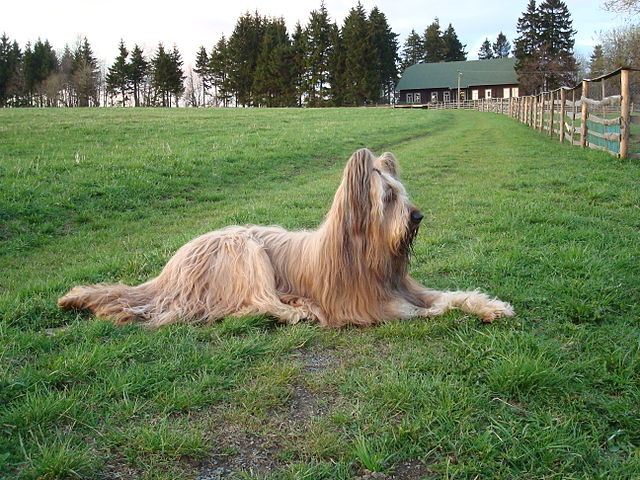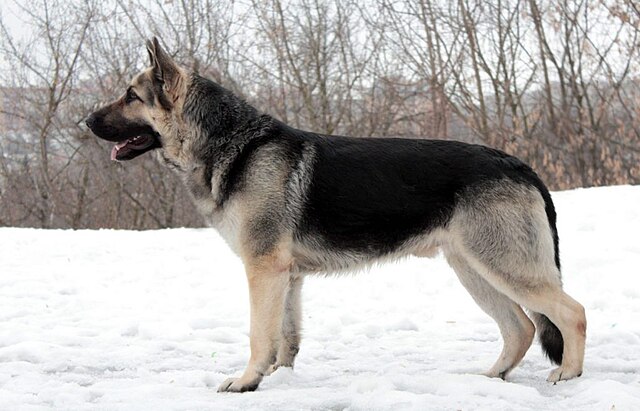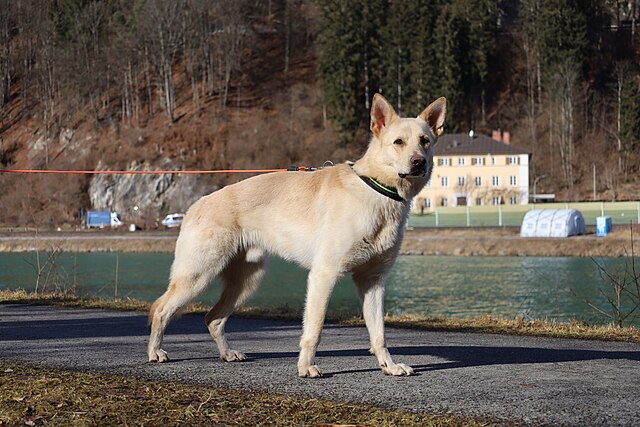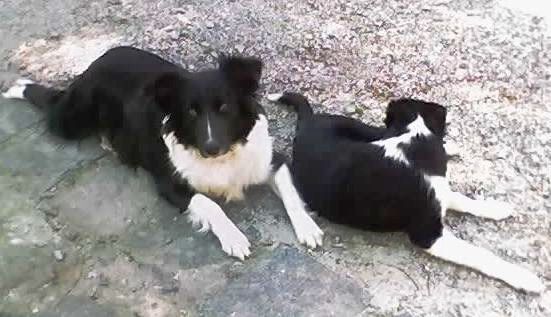The Briard is an ancient French breed who both guarded as well as herded flocks. He was also used as a war dog, carrying supplies to the front lines and searching for wounded soldiers. The breed is loyal and courageous – a true working companion. He also makes an exceptional family dog as he loves children and is incredibly stable-tempered. Briards are protective and faithful and are one of dogdom’s best kept secrets. They have been referred to as “a heart wrapped in fur”.
Having been bred to protect, the Briard is normally aloof with those he doesn’t know. He should never be outright shy or timid, however. Fearful Briards are often the result of too little socialization, so it is vital that he is taken out and socialized while he is still young. This early exposure to the world (introducing him to lots of people, places and things) will help him to develop his calm and stoic demeanor. It is actually recommended that the socialization start early and go until he is at least a year old. This will not interfere with his guarding abilities and will, in fact, make him more stable-tempered if he is ever in the position to guard his owner. “Attack training” is not necessary as he will naturally defend his owner if they are peril (usually as a last resort).
Briards tend to have very individual temperaments. Some are stoic while others are silly, some are social while others tend to enjoy a quiet place out-of-the-way of people. All Briards, however, should be house dogs rather than kennel dogs. Very rare is the dog who doesn’t want to keep an eye on his owner, following the person from room to room. Because they are so devoted to “their people”, none of them should be relegated to a sad life outside with little human contact. To do so would erode away at the dog’s unique personality and turn him into a lonely mess who might then dig up the yard, chew up the siding and/or turn into a nonstop barker. Because of their high affection for people and their sensitive nature, the breed is prone to separation anxiety when the owner leaves.
The Briard has been compared to a cat in the sense that he doesn’t tend to see people as masters, but rather as equals. This can make him particularly stubborn when he wants to be! It also means that he can take charge in households where there are no clear boundaries, so obedience training is a must. He should never be trained with harsh methods as he will shut down. When trained with fair methods, however, he can molded into a very obedient dog. Briards are intelligent and have great memories (for good things as well as bad). They learn quickly when you show them that learning commands is a fun way of interacting with you!
Briards are quiet in the house (although will bark to alert of strangers), and are capable of living in either a city or country setting. They are active, but not in a way that leaves the house in a mess as they rush about. Instead, this large breed is agile and aware of his surroundings (once mature, that is – puppies may be more rambunctious). He isn’t perpetually in motion like other herding breeds, although he does need to be exercised regularly. These herding dogs often worked in unfenced land which made them not apt to wander, but a fence is useful to keep the dog safe from other animals or ill-meaning people. Along with exercise, this breed also needs a job to do that will work out his mind along with his body! Don’t forget to also work out the Briard’s jaws with a toy such as a Benebone – https://amzn.to/410F5TG
The Briard’s long double coat is one of his crowing glories. It is low-shedding and the coarse texture means that it naturally repels dirt and water. This said, it must be groomed on a regular basis or else it could quickly turn into a nightmarish mess! On average, the coat will require about two hours of work a week if it is kept up with on schedule. It is worth remembering that a Briard has long hair on their face as well, which means that after they get a drink of water you might get a face full of wet hair as they lay their head on your lap!
Most Briards get along very well with other dogs, and many get along fine with cats as well (although some will try to chase cats). They particularly love to play, so animals which are a similar size usually make better playmates. This said, many are quite capable of playing with even the smallest of dogs! Strange dogs encroaching on their territory may not be met with happy greetings, however. There is a definite territorial streak in the breed. Some Briards also show aggression towards members of the same sex. As far as housemates, be aware that Briards may try to herd other animals (as well as humans), as this is a natural instinct for them. They do this using their large head to push them, their body to guide them, and their teeth to hurry them up!

Affiliate Disclaimer
As an Amazon Associate, I earn from qualifying purchases. This means that if you click on an affiliate link on this site and make a purchase, I may earn a small commission at no additional cost to you. Rest assured that I only link to products I have used, or use on a regular basis, and trust enough to recommend them to you!



